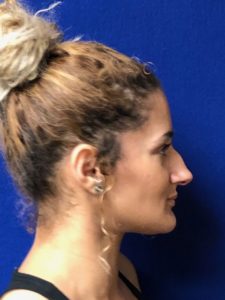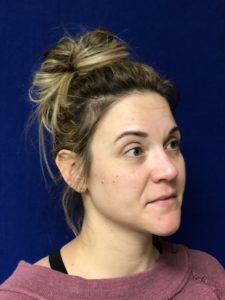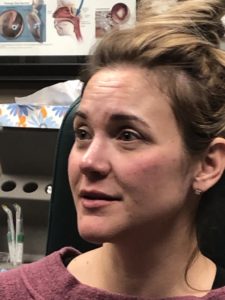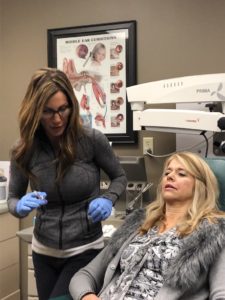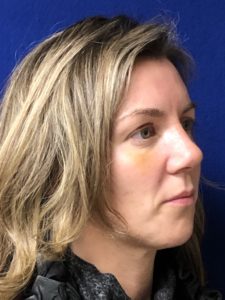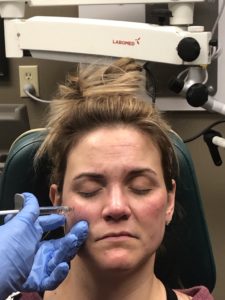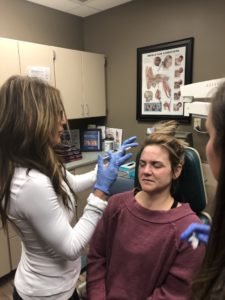Necrotizing external otitis
Necrotizing external otitis (malignant otitis externa) is an uncommon form of external otitis that occurs mainly in elderly diabetics, being somewhat more likely and more severe when the diabetes is poorly controlled. Even less commonly, it can develop due to a severely compromised immune system. Beginning as infection of the external ear canal, there is an extension of the infection into the bony ear canal and the soft tissues deep to the bony canal. Unrecognized and untreated, it may result in death. The hallmark of malignant otitis externa (MOE) is unrelenting pain that interferes with sleep and persists even after swelling of the external ear canal may have resolved with topical antibiotic treatment.[18] It can also cause skull base osteomyelitis (SBO), manifested by multiple cranial nerve palsies, described below under the “Treatment” heading.

Natural history
MOE follows a much more chronic and indolent course than ordinary acute otitis externa. There may be granulation involving the floor of the external ear canal, most often at the bony-cartilaginous junction. Paradoxically, the physical findings of MOE, at least in its early stages, are often much less dramatic than those of ordinary acute otitis externa. In later stages, there can be soft tissue swelling around the ear, even in the absence of significant canal swelling. While fever and leukocytosis might be expected in response to bacterial infection invading the skull region, MOE does not cause fever or elevation of white blood count.
Treatment of MOE
Unlike ordinary otitis externa, MOE requires oral or intravenous antibiotics for cure. Pseudomonas is the most common offending pathogen. Diabetes control is also an essential part of treatment. When MOE goes unrecognized and untreated, the infection continues to smolder and over weeks or months can spread deeper into the head and involve the bones of the skull base, constituting skull base osteomyelitis (SBO). Multiple cranial nerve palsies can result, including the facial nerve (causing facial palsy), the recurrent laryngeal nerve (causing vocal cord paralysis),[citation needed] and the cochlear nerve (causing deafness).
The infecting organism is almost always pseudomonas aeruginosa, but it can instead be fungal (aspergillus or mucor). MOE and SBO are not amenable to surgery, but exploratory surgery may facilitate the culture of unusual organism(s) that are not responding to empirically used anti-pseudomonal antibiotics (ciprofloxacin being the drug of choice). The usual surgical finding is diffuse cellulitis without localized abscess formation. SBO can extend into the petrous apex of the temporal bone or more inferiorly into the opposite side of the skull base.[citation needed]
The use of hyperbaric oxygen therapy as an adjunct to antibiotic therapy remains controversial.[18]
Complications
As the skull base is progressively involved, the adjacent exiting cranial nerves and their branches, especially the facial nerve and the vagus nerve, may be affected, resulting in facial paralysis and hoarseness, respectively. If both of the recurrent laryngeal nerves are paralyzed, shortness of breath may develop and necessitate tracheotomy. Profound deafness can occur, usually later in the disease course due to relative resistance of the inner ear structures. Gallium scans are sometimes used to document the extent of the infection but are not essential to disease management. Skull base osteomyelitis is a chronic disease that can require months of IV antibiotic treatment, tends to recur, and has a significant mortality rate.[18]












